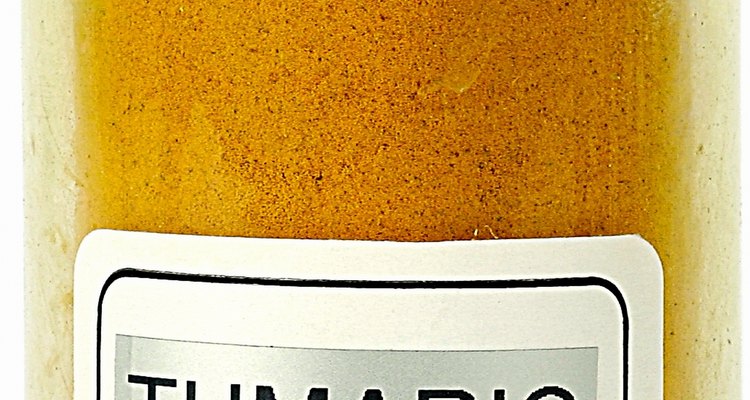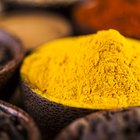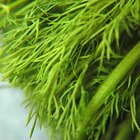
The spice blend known as curry, practically synonymous with Indian cooking, was adopted and championed by the British during the colonial era. Today, prepared curry powder blends are available in mainstream and specialty markets across the United States and vary in heat and intensity depending on the brand and composition.
Turmeric Basics
Turmeric is a herbaceous perennial from the Zingiberaceae family. Curry powder contains dried and ground roots of the turmeric plant, but in India or other areas where the plant grows in abundance, cooks also use the roots fresh. Herbalists and traditional healers used turmeric for centuries in topical preparations, pastes and other forms. The chemical curcumin is the active ingredient in turmeric and proponents claim that among other properties, turmeric is an anti-inflammatory agent. MedlinePlus lists the extract of turmeric as unproven in its efficacy in helping relieve the symptoms of various conditions, including jaundice, skin cancer and Alzheimer's disease.
Indian/Southeast Asian Spices
Classic spices used in northern India include coriander seeds, cardamom, chile and bay leaf -- a heady mix. Turmeric lends a faintly bitter tang to the mixture and a rich yellow-orange color, though your sauce might end up vibrant red, depending on what other ingredients make up the curry mixture. Grated galangal, similar to ginger, curry leaf, lemon grass and coconut milk impart a more tropical flavor to a powdered curry blend.
Cost/Blends
Of all the spices in commercially prepared blends, turmeric is typically the least pricy. Too much turmeric in a blend might make the preparation more cost effective, but it results in a bland, somewhat dusty tasting curry preparation. Spice blends might not list the percentage of turmeric in a curry powder, but some labels assure buyers that the blend doesn't contain over a certain amount of the ingredient. Because of its bright yellow-gold hue and relatively low cost, turmeric makes a thrifty, if not totally satisfying substitute for saffron in Indian and Persian cooking. You can blend your own mixture of spices and vary the amount of turmeric to suit your personal taste and budget.
Uses/Variations
Pre-blended curry powder is a timesaver in making savory sauces or cold dressings. You can amp up a pedestrian commercial blend with powdered chile, cinnamon, cumin, or whatever individual taste you find lacking. Cooking curry powder in oil before combining it with other ingredients allows the flavors to bloom, and you eliminate any brassy or raw tastes, which is particularly important if you make chicken curry salad or chutney-type relishes. If you want to turn ordinary looking rice into something eye-catching, throw in a pinch of plain turmeric onto cooked rice and stir with a fork. The rice turns golden, but the taste will not alter perceptibly.
Related Articles
Seasonings for Trinidadian Foods

How to Cook With Turmeric Powder

Garam Masala Substitute

What to Use in Place of Italian ...

Sources of Calcium in Indian Food

Herbs & Spices in Lentil Soup

How to Make Your Own Seasonings for ...

What Is Chili Paste?

Classic Russian Spices

What Herbs & Spices Flavor Fish?

About Fresh Ginger Substitutes

Substitutes for the Saffron Spice

Tips on Cooking with Curry

Can You Cook With Turmeric?

Galangal Powder Substitute

What Is Accent Seasoning?

How to Marinate Sashimi

What Can I Substitute for Yellow ...

Bratwurst Spices

Can I Use Cumin Seeds Instead of Ground ...
References
Writer Bio
Barrett Barlowe is an award-winning writer and artist specializing in fitness, health, real estate, fine arts, and home and gardening. She is a former professional cook as well as a digital and traditional artist with many major film credits. Barlowe holds a Bachelor of Arts in English and French and a Master of Fine Arts in film animation.
Photo Credits
Zedcor Wholly Owned/PhotoObjects.net/Getty Images